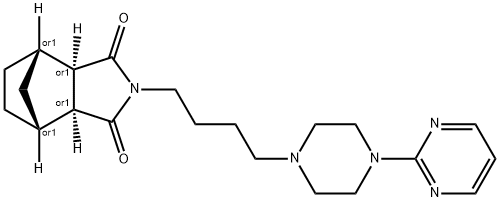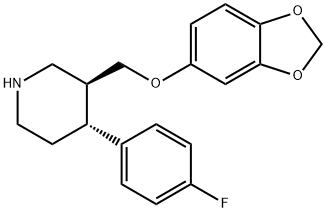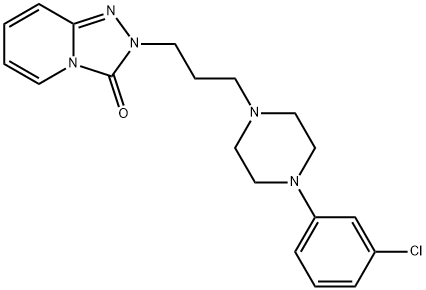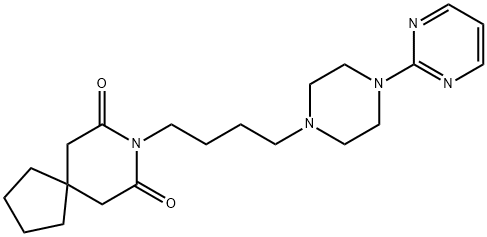TANDOSPIRONE , ≥98%(HPLC) , 87760-53-0
Synonym(s):
(1R*,2S*,3R*,4S*)-N-(4-(4-(2-Pyrimidinyl)-1-piperazinyl)butyl)-2,3-norbornanedicarboximide citrate salt;SM 3997
| Pack Size | Price | Stock | Quantity |
| 5mg | RMB518.40 | In Stock |
|
| 10mg | RMB942.40 | In Stock |
|
| others | Enquire |
PRODUCT Properties
| Melting point: | 112-113.5° |
| Boiling point: | 613.9±65.0 °C(Predicted) |
| Density | 1.239±0.06 g/cm3(Predicted) |
| storage temp. | Store at +4°C |
| solubility | DMSO: soluble38mg/mL |
| pka | 7.71±0.10(Predicted) |
| form | Solid |
| color | White to Off-White |
Description and Uses
Tandospirone is another 5-HT1A receptor agonist under development by Sumitomo Pharmaceutical Co., Ltd., in Japan and Pfizer in the United States. Results of phase II and phase III clinical trials show that tandospirone is effective for the treatment of anxiety neurosis. Significant improvement is also observed in patients with psychosomatic disease, phobia, and depersonalization (Murasaki 1995). The results have shown that initial treatment should be started at 30 mg daily, and the dose should be increased up to 60 mg daily according to symptoms (Murasaki 1995). A double-blind comparative study with diazepam revealed that tandospirone tends to be superior to diazepam in patients with depressive neurosis, whereas diazepam may be more effective than tandospirone in severely ill patients (Murasaki et al. 1992).
Tandospirone is a 5HT1A receptor partial agonist. Studies indicate that tandospirone significantly reduces haloperidol-induced bradykinesia in a dose dependent manner. The potency of Tandospirone is equal to that of buspirone and approximate one-half that of diazepam. The potency of Tandospirone at dopamine antagonistic action is less than 1/4 that of buspirone.
Safety
| Symbol(GHS) |  GHS07 |
| Signal word | Warning |
| Hazard statements | H315-H319-H335 |
| Precautionary statements | P261-P264-P271-P280-P302+P352-P305+P351+P338 |
| Hazard Codes | Xi |
| Risk Statements | 36/37/38 |
| Safety Statements | 26 |
| WGK Germany | 3 |






